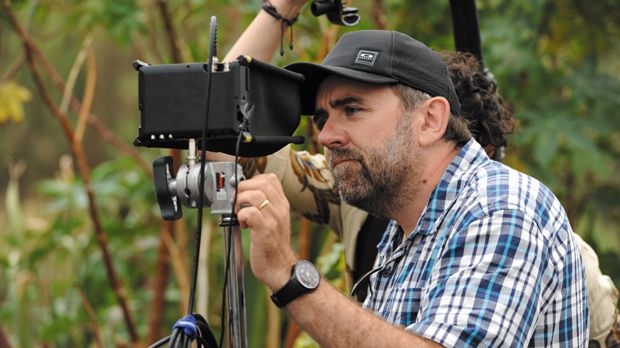 It takes a man of singular vision and determination to parcel out 17 short stories to 18 directors and, through some strange alchemy, forge a unified whole. That man is Australian filmmaker Robert Connolly, responsible for the new film event, Tim Winton’s The Turning, and TRAVIS JOHNSON was lucky enough to speak with him.
It takes a man of singular vision and determination to parcel out 17 short stories to 18 directors and, through some strange alchemy, forge a unified whole. That man is Australian filmmaker Robert Connolly, responsible for the new film event, Tim Winton’s The Turning, and TRAVIS JOHNSON was lucky enough to speak with him.
Robert Connolly reflects on his history with Tim Winton, the iconic Western Australian writer whose 2005 short story collection, The Turning, is the basis for the new portmanteau that Connolly has produced.
“I’ve pretty much read all of his work,” he says thoughtfully. “I think the first thing that I read, that led me to delving back into his work, was The Riders, which I love. I think, for me, he speaks of an Australia that I know; it feels real to me, it feels familiar. He scrutinises it, he’s tough on it, he can be entertaining about it, but it feels real. I love that about it and I feel that was part of the attraction that made me want to do this as a film – it was an Australia that I wanted to put up on screen.”
Even so, it seems obvious that there might have been easier Winton works to transpose to celluloid – rumours of a film adaptation of Dirt Music, for example, have abounded for years. However, Connolly’s desire to make a film of Winton’s work coincided with an interest in challenging the way films are distributed and exhibited in this country.
“I’d just finished the film Balibo,” he says, referring to his 2009 film about the murder of Australian journalists by Indonesian forces during the invasion of East Timor. and I was looking at exhibition in the cinema and I was interested in something that could work in the cinema in a different way – we call it ‘a unique cinema event.’ Rather than a traditional feature film, we wanted to break new ground. That’s why the book appealed to me, because it is a bit of a cryptic jigsaw puzzle of a book – do all the stories interconnect, or don’t they? they don’t have to – you can read them independently. So I think that’s where my headspace was at when I optioned it.”
Hence the distribution strategy for The Turning, which involves positioning the film as a prestige event with a limited cinematic run, numerous Q & A screenings with Connolly and other creatives and other efforts to ensure that this is seen not just as a film, but a kind of cultural happening.
And why not? After all, this is the kind of grand cinematic undertaking rarely seen these days, if ever, and the talent both behind the camera – including Connolly, Justin Kurzel, Simon Stone, David Wenham, Marieka Walsh – and in front – Cate Blanchett, Dan Wylie, Hugo Weaving, Rose Byrne, Miranda Otto, Richard Roxburgh – reflects this.
“Remember there was a Paul Kelly concert where they got a whole heap of bands to play a Paul Kelly song in their own style?” Connolly asks, reaching for a musical metaphor. It felt a bit like that. I though that this book like an album of Tim Winton and that made it much easier to give to different people to interpret.
“There were a few people that I couldn’t get. I approached people that I loved creatively, who I thought had done things that I thought, creatively, were inspiring. Some of the people I approached because they were friends, like David Wenham – I’d directed him in a few films and I knew he wanted to direct himself. There were a few people I wanted to get but couldn’t because of other commitments. I wanted John Butler to do one, but he was busy finishing an album. He was really keen and interested, but in the case of some creative people it was a case of how I could fit it into their life, because some people are incredibly busy. Like Mia Wasikowska did hers in two weeks in between two films she was doing. But that journey of finding people was fun.”
Other than that, Connolly was remarkably hands-off. “I wanted people to interpret the stories in a very personal way, so I didn’t want them to have to shoot them where Tim had set them. we wound shooting them all over Australia, although about a third of them were filmed in WA. Part of the interpretation was for people to find somewhere in the landscape that personally spoke to them.”